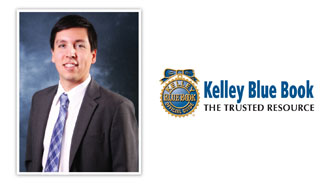KBB: High Gas Prices Likely to Stay, but Automakers More Prepared Than 2008 Hike

By subscribing, you agree to receive communications from Auto Remarketing and our partners in accordance with our Privacy Policy. We may share your information with select partners and sponsors who may contact you about their products and services. You may unsubscribe at any time.
IRVINE, Calif. –
It appears like the U.S. won’t see any relief at the gas pump any time soon and considering some of the volatile concerns overseas, fuel prices may climb even higher, according to Kelley Blue Book.
That said, automakers’ vehicle lineups have never been better-suited for gas-price hikes than they are now, KBB noted. What’s more, with Corporate Average Fuel Economy deadlines on the horizon, the market should see even more fuel-friendly rides in the future.
As for the time being, the Energy Information Administration expects national fuel costs to average $3.48 per gallon this year. That compares to an average of $3.53/gallon in 2011.
"Although initial estimates from the EIA do not suggest fuel prices to hit record highs this year, there are significant risks overseas that have the potential to send gas prices soaring,” explained KBB senior market analyst Alec Gutierrez, who went on to express a few concerns regarding America’s relationship with Iran and its impact of fuel costs down the road.
Oil costs might be steady now, however that could change dramatically in the event of an Iranian oil embargo, Iran following through on its threat to cut off the Strait of Hormuz oil pipeline or if the U.S. and Iran go to war, Gutierrez suggested.
Any of those events could push fuel costs significantly higher and possibly cause another U.S. recession, he added.
Subscribe to Auto Remarketing to stay informed and stay ahead.
By subscribing, you agree to receive communications from Auto Remarketing and our partners in accordance with our Privacy Policy. We may share your information with select partners and sponsors who may contact you about their products and services. You may unsubscribe at any time.
“In any scenario, consumers should be prepared to face gas prices of $3.50 per gallon or more for the foreseeable future,” he added. “Increased market share for compact cars and crossovers is likely in 2012 as consumers continue to emphasize fuel-efficiency when making their purchases.”
However, Gutierrez said it’s fortunate that the market has more fuel-friendly these days and stressed that fuel efficiency is stronger “than ever before.” He touted several vehicles unveiled at the North American International Auto Show in Detroit as examples of fuel-friendly rides that may attract consumer attention, including the Toyota Prius C (50 miles per gallon, $19,000 entry-level cost) and 2013 Ford Fusion (37 mpg).
In fact, Gutierrez listed five new vehicles achieving an average of 18.5 percent better fuel economy than their 2008 model-year editions, as the following list indicates.
—2013 Ford Fusion: 37 mpg, 27.6 percent higher than 2008 model-year.
—2012 Toyota Prius: 48 mpg, 6.7 percent higher.
—2012 Chevrolet Sonic: 40 mpg, 17.6 percent higher than 2008 Aveo.
—2012 Hyundai Elantra: 40 mpg, 21.2 percent higher.
—2012 Honda CR-V: 31 mpg, 19.2 percent higher.
“With so many vehicles available that offer excellent fuel economy, the market is better prepared today than at any time in the past to deal with spikes in energy prices,” Gutierrez noted. “Vehicles will only improve their fuel-efficiency ratings in the coming years as Corporate Average Fuel Economy standards continue to put pressure on manufacturers to increase the efficiency of their fleets.”
Of course, some argue the pressure from CAFE standards will hurt the industry in other areas.
In a recent interview with Auto Remarketing, incoming National Automobile Dealers Association chair Bill Underriner – a dealer from Billings, Mont. — voiced his concerns with CAFE, pointing out that hitting the fuel efficiency standard will come with quite a price.
“You know, 2025, you think that’s a long time away, but it really isn’t,” Underriner said, referring to the CAFE standard deadline. “We have to be at 54.5 mpg in 2025. It’s going to take a lot of money. It’s going to take a lot of technology to get to that point.
“I don’t know if the American public can swallow the increase in the price of a car to make that happen. I don’t think the cars that we’re going to have to build for 2025 are the cars the American public are going to want,” he continued.
Sharing some of what has occurred in his own market, Underriner added: “I live in Montana where 60 percent of the vehicles we sell are trucks. I’m trying to figure out how we’re going to get to that point.”
Interestingly enough, it was revealed Friday that Arizona became the first state to repeal the California fuel economy law — modeled after the federal government’s standard, but said to be stricter — after having adopted the Golden State’s law. NADA offered its perspective on the matter.
“This is a victory for consumers. These duplicative rules would have made it more expensive for working men and women to find affordable transportation,” NADA said in a statement. “Duplicative state-based fuel economy programs, like California’s, hurt consumers by limiting vehicle choice without providing commensurate environmental benefits.
"With two distinct federal standards already imposed by the Environmental Protection Agency and the Department of Transportation, these rules were unnecessary," NADA continued. "Auto dealers in Arizona and across the nation support fuel economy increases under a single, national fuel economy standard.”


